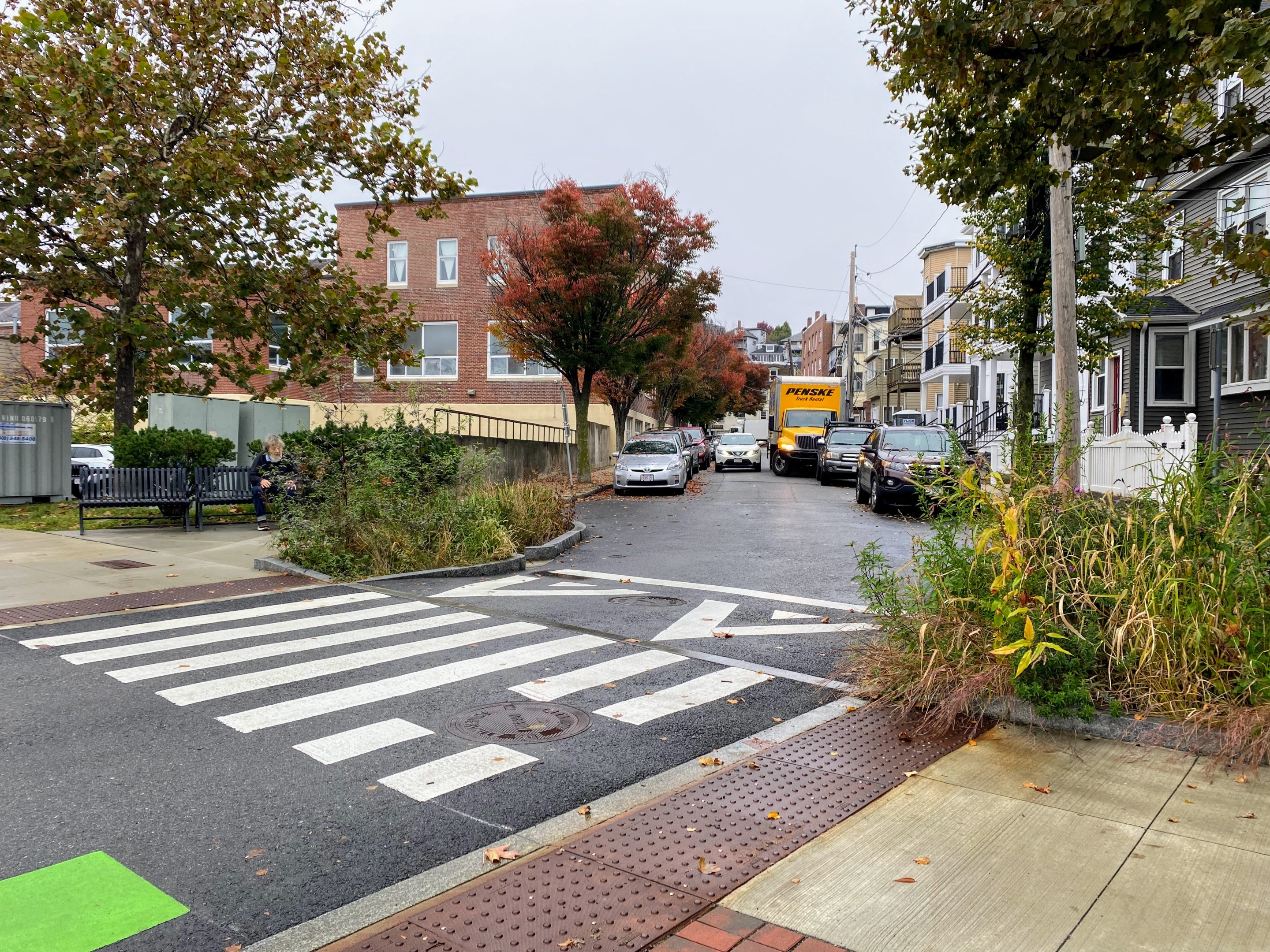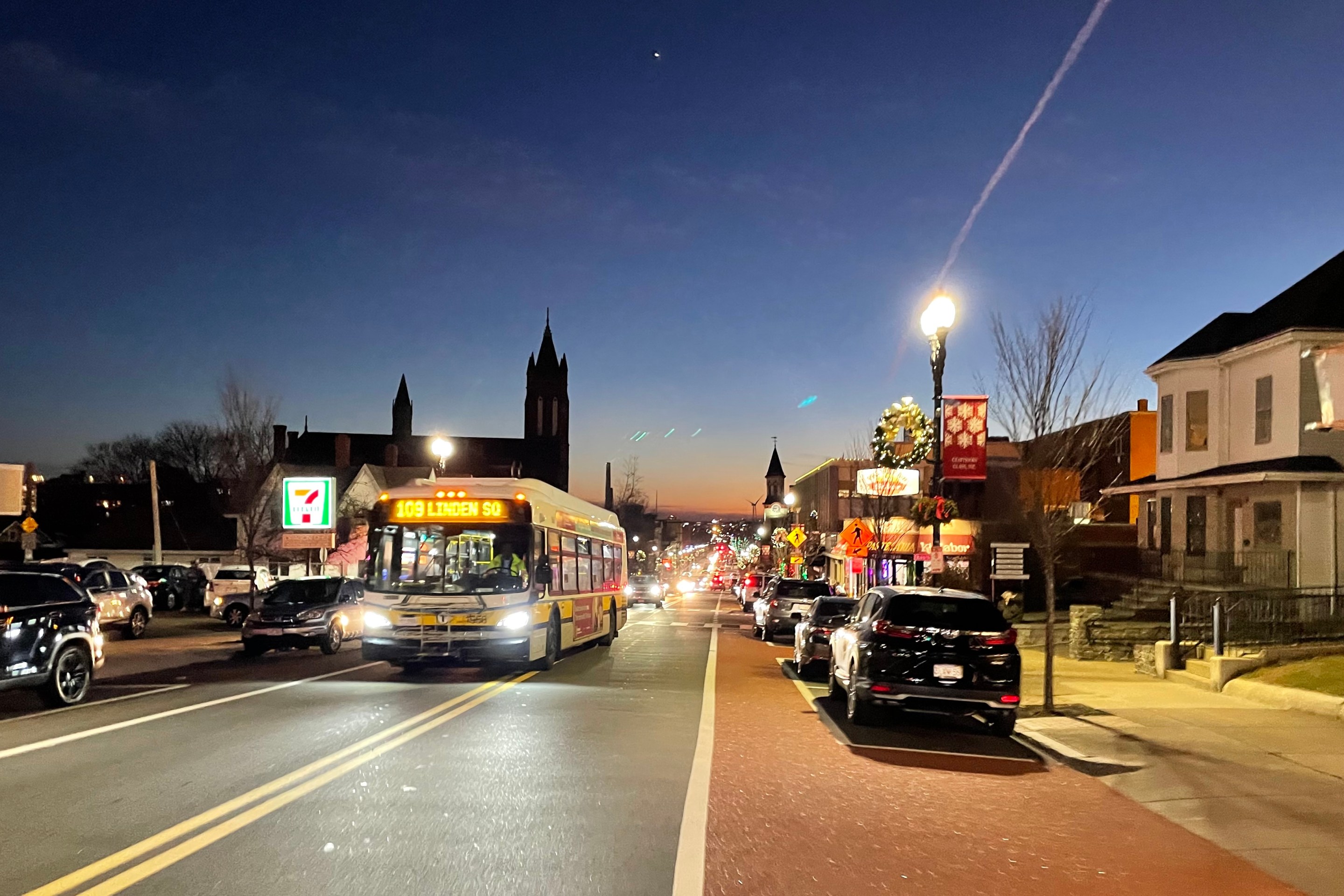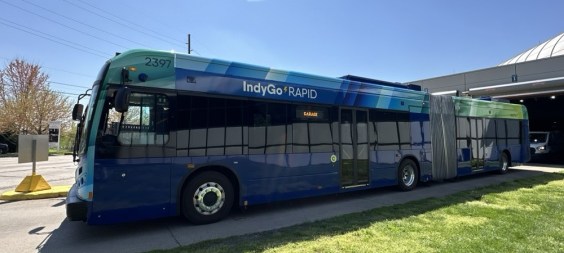Last week, city and state officials gathered to announce Boston’s first ever green infrastructure policy standards, which aim to increase the city’s climate change resiliency through small-scale street installations.
At a press conference in Central Square Park in East Boston, Kate England, Boston’s Director of Green Infrastructure, gave a tour of the different green infrastructure elements the city has piloted throughout the park, such as porous pavement and tree trenches.
“Fundamentally, green infrastructure features are stormwater management features that mimic nature,” explained England. “They use plants and soil and other materials to help sort stormwater, to absorb it back into the ground… they also allow us to build green spaces back into our cities. They frequently have trees in them, so they allow us to increase our urban tree canopy and reduce urban heat island effect.”
“I do think it's fitting that the city used Central Square in East Boston to pilot this green infrastructure. We are an environmental justice community. We do have one of the lowest tree canopies in the City of Boston,” said Adrian Madaro, State Representative for the 1st Suffolk District, which includes East Boston.
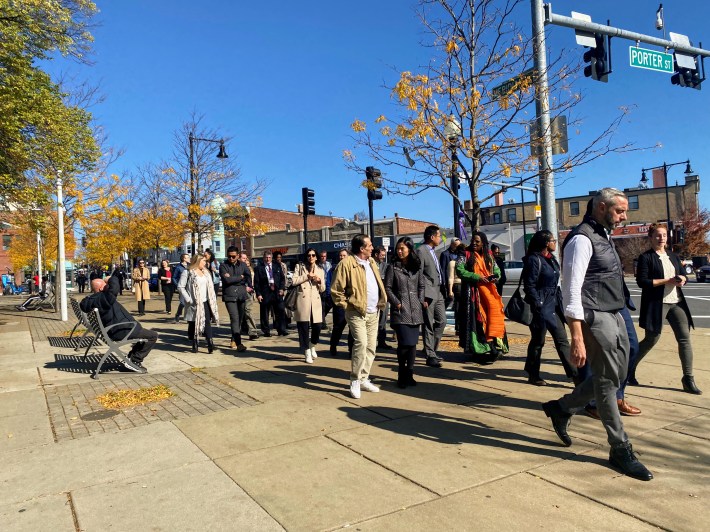
East Boston is considered one of five “Environmental Justice” communities under the City of Boston’s Heat Plan. Residents of this neighborhood experience some of the hottest temperatures in the city due to having a limited tree canopy and large amounts of asphalt.
The park, while featuring many green infrastructure examples, is surrounded by asphalt. Just across the street from the park sits a large privately-owned parking lot, while the immediate borders of the park are all lined with on-street parking.
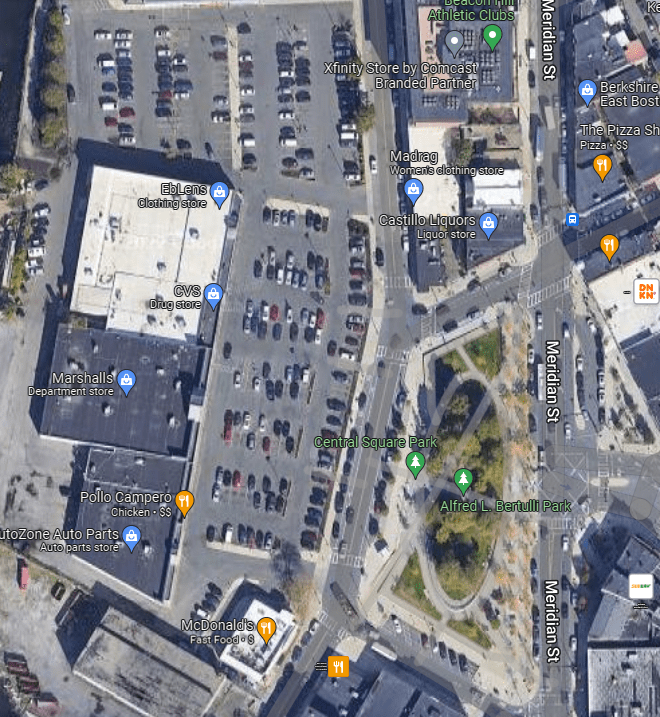
Through new standards for curb extensions, the city aims to build more sustainable infrastructure to help reduce stormwater flooding, promote groundwater recharge and filter pollutants from runoff, while also increasing safety for pedestrians throughout the city.
The new green infrastructure design standards for curb extensions will require one of the following design features to absorb stormwater runoff:
- Natural retention of stormwater in the right-of-way with rain gardens
- Infiltration tree pits or tree trenches
- Porous pavements that can absorb rainfall
- Stone subsurface infiltration areas
- Seeding with low-maintenance fescues or wildflowers
“We will require that curb extensions incorporate one of the five green infrastructure design alternatives. So whether that's a green space, like a rain garden or a tree pit or porous paving materials, we are committed to not only making our streets safer, but greener and more resilient,” said Boston Mayor Michelle Wu.
According to the City of Boston website, even without the green component, curb extensions offer a number of safety benefits for pedestrians by decreasing the distance people have to cross from one side of the street to the other and slowing down motorized traffic.
Additionally, the new policy includes two contracts for new and existing public green infrastructure projects to maintain both the porous paving installations and the ones with landscaping in need of pruning.
The third component of the policy involves the creation of a volunteer program for folks who may want to “adopt” a green infrastructure feature and help clean up any litter and leaves throughout the year.
The city will also host training programs for both residents and staff interested in green infrastructure.
Across the river in the City of Somerville, we can get a glimpse of what these green infrastructure curb extensions may look like on Somerville Avenue, a recent street reconstruction project that incorporated numerous rain gardens and stormwater treatment areas alongside its protected bike lanes and raised crosswalks:
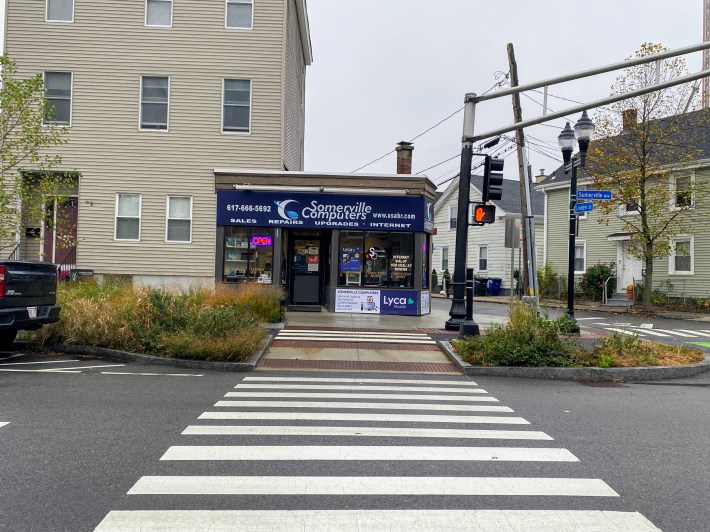
According to Dan Amelin, the Project Manager for the Somerville Avenue work, we can expect to see more of these design elements as part of a larger initiative across Somerville.
“Green Stormwater Infrastructure (i.e., bioretention basins, stormwater infiltration planters) are now being implemented in almost all of our City’s infrastructure projects to help increase groundwater infiltration,” explained Amelin.
For this project area, extending from Union Square to Medford Street along Somerville Avenue, “these green infrastructure components will capture, on average, the first 1.5 inches of runoff,” added Amelin.
In NACTO’s Urban Street Stormwater Guide, curb extensions are just one of a number of green infrastructure examples. Stormwater transit stops, floating island planters and stormwater medians can also be added to streetscapes.
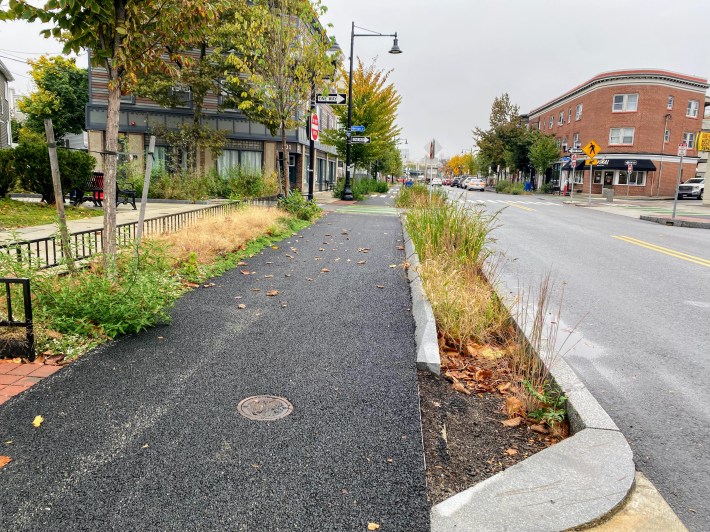
“These are projects that demonstrate what's possible in dense urban environments where we seek to prevent flooding, to keep pollutants out of our waterways…so using the new design standards that we're announcing here today, every future project, big and small, creates an opportunity to implement green infrastructure elements on our city streets,” said City of Boston’s Chief of Streets Jascha Franklin-Hodge.
